OUR EARLY VERDICT
You won't find a bigger and better Android phone than the Samsung Galaxy S9 Plus, thanks to its oversized 6.2-inch curved screen and low-light-defeating dual-lens camera. Sure, it looks exactly like last year's S8 Plus, but it does fix the fingerprint sensor location (it's now center-aligned on the back) and speakers (now stereo). The new AR Emoji mode is overrated, though, and its higher price is tough to justify. This is for people who want the biggest screen and the best camera on one phone.
FOR
- Impressive dual-lens camera
- Better-placed fingerprint sensor
- Loud stereo speakers
AGAINST
- Not all that different to S8 Plus
- AR Emoji mode is overrated
- Expensive for 0.4 inches of extra screen
Update: Ahead of our full Samsung Galaxy S9 Plus review, you can learn how to pre-order the new phones below and how they're performing so far in our early tests.
Without dramatic changes to the design, it’s only an iterative update to the S8 Plus – but it’s an iterative update to an Android phone that’s been sitting near the top of our best phones list for the past 11 months. That’s important to remember.
One week of testing the phone at MWC has gone into this hands on review, giving us a chance to use it in Barcelona and New York City. The low-light photos and big screen are the two most obvious highlights.
It’s still Samsung’s grandiose 6.2-inch curved ‘Infinity’ display that will sell you on this more expensive phone over the 5.8-inch Galaxy S9, and its improved 12MP camera is coupled with a f/1.5 maximum aperture.
This is the first camera phone with such a wide aperture, giving the S9 and S9 Plus low-light and noise-defeating powers that are more advanced than those of the Google Pixel 2, according to our early tests.
The S9 Plus benefits from a rear dual-camera lens with the same telephoto capabilities as last year’s Note 8 (the S9 has one lens on the back). Both new flagship phones can also capture super-slow-motion video at 960 frames per second if you’re serious about video and, if you’re not, have an 8MP front-facing camera that can paint your face with AR Emoji props and masks.
Samsung has listened to the negative feedback regarding last year’s handsets, and has wisely moved its offset rear fingerprint sensor to a center-aligned position. It’s a more natural location, and you may not even need it thanks to more secure face unlock and iris scanning onboard. Addressing another shortcoming of the S8 Plus, the company finally gives its flagship phones stereo speakers for superior sound.
If an emphasis on stereo speakers, face unlock, AR Emoji and vertically stacked 12MP dual cameras sound like Samsung’s take on the iPhone X’s features, you're right. The S9 Plus tries to match everything Apple can do, but at a larger screen size and with a 3.5mm headphone jack – and it also tries to best the Google Pixel 2 XL’s low-light photography. It’s shaping up to be the best big, albeit an expensive, Android phone in 2018, at least until the Galaxy Note 9debuts.
- Want to see all this at a smaller size and price? Read our hands-on: Samsung Galaxy S9 review
Samsung Galaxy S9 release date and price
- Samsung Galaxy S9 Plus release date: March 16
- Samsung Galaxy S9 Plus pre-orders: February 25 (EU), March 2 (US)
The official Samsung Galaxy S9 Plus release date is March 16, following pre-orders on February 25 in the UK and Europe and March 2 in the US.
The Galaxy S9 Plus price is more expensive than last year's S8 Plus in the US and UK. In the US, it'll cost $839.99 (AU$1,349) for the S9 Plus unlocked through Samsung's official website. That's only $10 more expensive than the S8 Plus, but now $120 more expensive than the normal-sized S9.
Of course US carriers like Verizon, AT&T, T-Mobile and Sprint will break this into for digestible monthly fees, though Verizon and AT&T charge $100 more in the long run. But all carriers are offering $350 for recent phone trade-ins.
In the UK, the Galaxy S9 Plus costs £869. That's a big price hike over the S8 Plus, which cost £779. That's £90 more in one year. Ouch.
EE has announced that the S9 Plus is now available for pre-order. Its Essential plan starts at £150 down and £63 a month for 4GB of data. For users who upgrade to the Max plan get 60GB of data plus two years of access to the BT Sports app for £78 per month. Additionally, buyers can get £250 off by trading in their old Samsung Galaxy S7 or Samsung Galaxy S7 Edge.
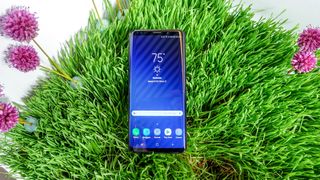
Design
- Samsung’s elegant-looking glass-and-metal smartphone design returns
- Small changes: center-aligned rear fingerprint sensor; stereo speakers
- You won’t notice the dimension differences from the S8 Plus
The Galaxy S9 Plus is the most stylish-looking smartphone you can buy thanks to Samsung continuing its design ethos of melding a glass panel with a metal frame. It doesn’t look very different from the S8 Plus, but that doesn’t matter unless you’re upgrading every year and demand annual newness.
Samsung has made small, but meaningful, changes on the back of its new phones. You’ll find the fingerprint sensor on the rear again, but now it’s aligned in the center, below the camera. The S8 Plus had a much-maligned offset scanner adjacent to the camera, and it was hard to blindly unlock your phone without smudging the camera lens.
Samsung Galaxy S9 Plus hands-on gallery
Advertisement
New to the S9 Plus is the fact that the face unlock and iris scanner biometrics now work at the same time to unlock the phone. Whenever our eyeballs or mug were looking down at the phone, it opened quickly. We’ll have to continue to test these features against Apple’s iPhone X Face ID to see which phone is less of a pain to unlock versus the relatively old-fashioned front fingerprint sensors that both companies retired from their phones last year.
The other important design tweaks are the S9 and S9 Plus stereo speakers, a first for a Samsung flagship and, frankly, long overdue. Samsung-owned AKG Acoustics has tuned the new earpiece speaker and the bottom-firing speaker so that they’re 40% louder than the single speaker on the S8 Plus. And support for Dolby Atmos brings simulated 360-degree sound to the new smartphone. The best part? You won’t accidentally mute all sound from the bottom-firing speaker when holding the phone in landscape mode.
You can choose one of four colors, including the new standout Lilac Purple. Other S9 color options at launch include Midnight Black and Coral Blue in the US, UK and Europe. There’s also a Titanium Gray hue coming to other so-far unspecified countries, according to Samsung.

Three of four color options are available in the US and Europe
And that’s it – you won’t readily notice anything else that’s new on the outside of the S9 Plus. The dimensions have changed by a few millimeters to reduce the top and bottom bezels, making it a tiny bit shorter than the S8 Plus, but it’s still a stretch to touch the corners of the screen furthest from your grip. This is a really big phone meant for big mitts.
Samsung, unlike its rivals, is standing by the 3.5mm headphone jack and microSD card slot. It’s also giving us a second year of the Bixby button on the left side of the phone to call up its digital assistant. No, you still can’t remap this button to your liking and, yes, you’ll still hit it instead of the nearby volume down key.

Galaxy S9 Plus (left) vs S9 (right)
Display
- 6.2-inch Quad HD+ Super AMOLED screen
- 90% of the front of the phone is now screen
- No in-screen fingerprint sensor here
Samsung’s 6.2-inch display on the Galaxy S9 Plus is as expansive as it is impressive. It’s unchanged from the company’s previous Infinity Display – but that's held up to be a fantastic screen, so that’s okay with us, too.
Its tall 18.5:9 aspect ratio has set the standard for all-screen smartphones. It can display a Quad HD+ resolution, yet it still looks outstanding at Full HD 1080p. It’s the combination of the futuristic-looking curved edges, vibrant colors, and high contrast ratio that make it pop.
We also appreciate the fact that Samsung has created a screen that fills 90% of the front of the phone. There’s very little bezel here and no notch whatsoever, which makes the S9 Plus feel like you’re holding one large, beautiful light beam in your hand.
There’s no in-screen fingerprint sensor, even though we’ve seen Chinese phone makers debut the technology already. That highlight may be saved for the Note 9, or perhaps the Galaxy S10.
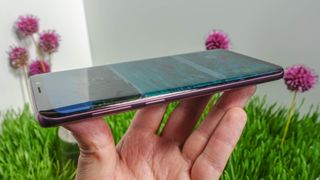
The S9 Plus sports the same lovely curved screen – now with a tiny bit less bezel
Rear camera
- World's first f/1.5 aperture on a phone
- Dual-aperture technology works like the human eye
- 960fps slow-motion video capture
Samsung is ready for all of your nightmarish low-light photo scenarios with the Galaxy S9 Plus camera and its new f/1.5 aperture – a world’s first for a smartphone camera.
Its magic is Dual-Aperture technology, which switches between an f/1.5 aperture (pulls in more light for darker scenes) to f/2.4 (reduces the amount of light captured to keep photos from becoming overexposed).
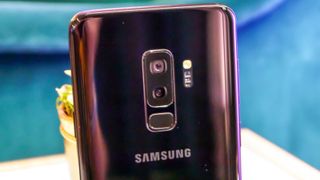
The S9 Plus has a dual-lens camera
The S9 Plus is now able to soak in 28% more light with 30% less noise compared to the S8 Plus. It also has the benefit of Samsung adding DRAM to its image sensor stack, allowing photos to be made up of a composite of 12 frames instead of 3 frames. Samsung has made significant camera hardware changes vs LG’s pure software AI approach with the LG V30 ThinkQ, and the results speak for themselves.
It’ll look like someone turned on more lights in your dimly lit pub and moody restaurant photos.
All of this groundbreaking camera trickery means it’ll look like someone turned on more lights in your dimly lit pub and moody restaurant photos. That’s exactly what we saw from the Google Pixel 2 and Google Pixel 2 XL a few months ago, but now Samsung (in controlled demos for now) has demonstrated that its new phones are significantly better for low-light photography. We’ll test out its photography capabilities in full in a few days.

Capture super slow motion video at 960fps
We’re also eager to continue testing Samsung’s new super slow motion video, which can capture up to 960fps at 720p HD, matching the Xperia XZ1 and XZ1 Compact. The 240fps slo-mo video has been bumped up to 1080p Full HD, too.
Samsung said that slow motion has been the most popular video mode outside of automatic, and there’s more reason to believe you’ll continue to want to use it: it has the ability to start recording slow motion video when it detects motion. Timing the on-screen shutter button is always a pain when recording slow motion video, but this should alleviate that problem.
Bixby Vision camera
- Bixby Vision can provide live translations and show calories in food
- Internet connection required for features to work
The Galaxy S9 Plus launches with Bixby Vision built-in this time, a basic improvement over last year’s flagship phones, which had Samsung’s AI feature defanged for several months.
What’s here from day one is a virtual assistant meant to rival Siri and Google Assistant, and its camera integration actually makes it superior in a few ways. Live translation, particularly, impressed us by being easy to load from the camera and quickly decode foreign language signs and menus. The background color, font size and multi-line text didn’t matter to Bixby, either. No photo had to be snapped to translate what was before us. That’s great news for travelers, though you will need data to power this internet-connected feature.
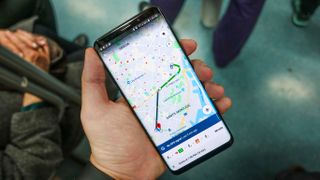
Bixby Vision will continue to name and detail landmarks through location-aware smarts and identify food from the camera. It’ll also now has the helpful (or shame-resulting) power to inform you of the amount of calories in that food, according to Samsung. We’ll have to evaluate this new feature ourselves to see how well in works in real life. We may eat a lot of donuts – for review testing purposes only.
The 8MP front-facing camera is put to use if you’d like a makeover. Bixby Vision has a new makeup mode, overlaying various blushes, mascara and lipsticks via partnerships with CoverGirl and Sephora. It’s an augmented reality feature designed to “guide you through the purchase flow,” noted Samsung. It seems like more of a neat tech demo, if you ask us.
AR Emoji
- Samsung’s answer to Apple’s Animoji is a little half-baked
- Easy to save and share on any third-party application
Like it or not, Samsung’s answer to Apple’s Animoji debuts on the Galaxy S9 Plus with AR Emoji. It uses the front 8MP camera to capture more than 100 different facial features.
Firing up the camera in AR Emoji mode will mirror your facial expressions on a 3D avatar, one you can customize with different genders, races, and hairstyles. Or you can go full-on bunny rabbit for a more ridiculous look. There are a bunch of crazy and creepy AR personas here.
There’s more variety and fun customizations compared to what Apple has provided iOS 11 users with its Animoji. But without the iPhone X and its more involved True Depth camera, the results aren’t as impressive with just 18 facial expressions. The AR movement here looks stiff.
We will note that it’s much easier to send AR Emoji messages to other users. Samsung has chosen to record your expressions (whether a custom message or a pre-made one) as a GIF. Users on non-Samsung handsets will be able to enjoy/loathe your constant AR tomfoolery.
Battery and performance
- 3,000mAh battery offers same performance as predecessor
- Plenty of power under the hood keeps Android 8 smooth
Advertisement
We’re going to run full Samsung Galaxy S9 Plus battery life tests in the final review, but we already know that it has a 3,500mAh capacity battery – the same as the Galaxy S8 Plus.
That’s still bigger than the 3,000mAh- and 3,300mAh-equipped Galaxy S9 and Note 8, so you should still get all-day battery life or better with this smartphone, even with consistent use.
We were hoping to eke out a few more hours courtesy of the new more efficiency chipsets that power the S9 and S9 Plus, but Samsung says we should expect similar battery performance. We’ll do more comprehensive battery draining and charging tests after MWC 2018.
The Galaxy S9 Plus should prove to be faster than last year Samsung flagships thanks to utilizing Samsung’s own Exynos 9810 (globally) or the Qualcomm Snapdragon 845 chipset (in the US and China to support both CDMA and GSM carriers). There’s also 6GB of RAM onboard compared to the S9 with 4GB of RAM.
We’ve run the same Snapdragon 845 chipsets on a Qualcomm reference phone and saw a 30% speed boost over the S8 Plus and Note 8 performance. Now that’s it’s in the Galaxy S9, we’ll have to rerun the same tests to see where it stands inside Samsung’s hardware.
Don’t worry about the overbearing software this year. The Galaxy S9 runs streamlined menus as part of its Samsung Experience software overlay that’s on top of Android 8.0 Oreo (it’s not called TouchWhiz anymore and not nearly as big of a turn off next to stock Android).
You’re getting 64GB of storage – the Galaxy S9 Plus has just one internal storage configuration – and a spot for a microSD card so you can add up to 200GB of additional space if you need to. With LG and Apple now upgrading everyone to 256GB options (for a higher price), this is the one area in which Samsung has held back.

Early verdict
The Galaxy S9 is the best of what Samsung has to offer at a really big size. Its 6.2-inch curved screen is spacious and elegant looking, even if nothing has changed about it.
The S9 Plus features that have been tweaked are important. The fingerprint sensor is in an ideal, center-aligned spot on the back, and the low-light-focused camera shows tremendous promise – enough to make a run for the top of our best camera phones list at launch.
We expect to see performance upgrades from the new chipsets and additional RAM, while Bixby Vision shows more promise and is launching alongside the phone this time. We didn’t care for AR Emoji and we can all pretend it doesn’t exist for the time being. It’s a tech demo to show friends at best, and Android users’ way of chipping in on Animoji Karaoke at worst.
There are three big obstacles for owning the Galaxy S9 Plus. First, it’s a big phone meant for big hands. If you’re not into that, go with the normal-sized S9 for its one-hand-friendly operation, even if you like the extra screen space, RAM, and battery life. Second, it’s more costly than the S9. It’s a lot to pay for 0.4 inches of extra screen space and power. Third, the Note 9 is expected in August, and it’s historically slightly bigger, noticeably better, and includes a fun S Pen.
Of course, if you want a really big phone right now, you’re not going to find one better than the S9 Plus. It’s shaping up to be our favorite phone for people with big hands and big wallets.






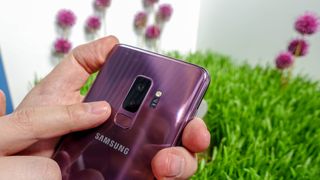
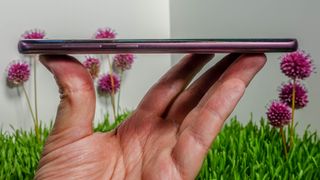

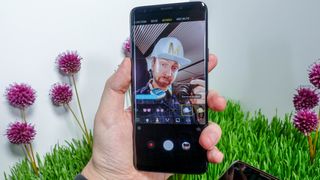

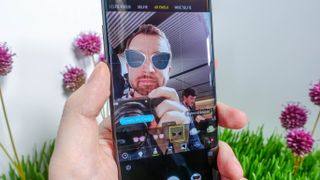
Post a Comment